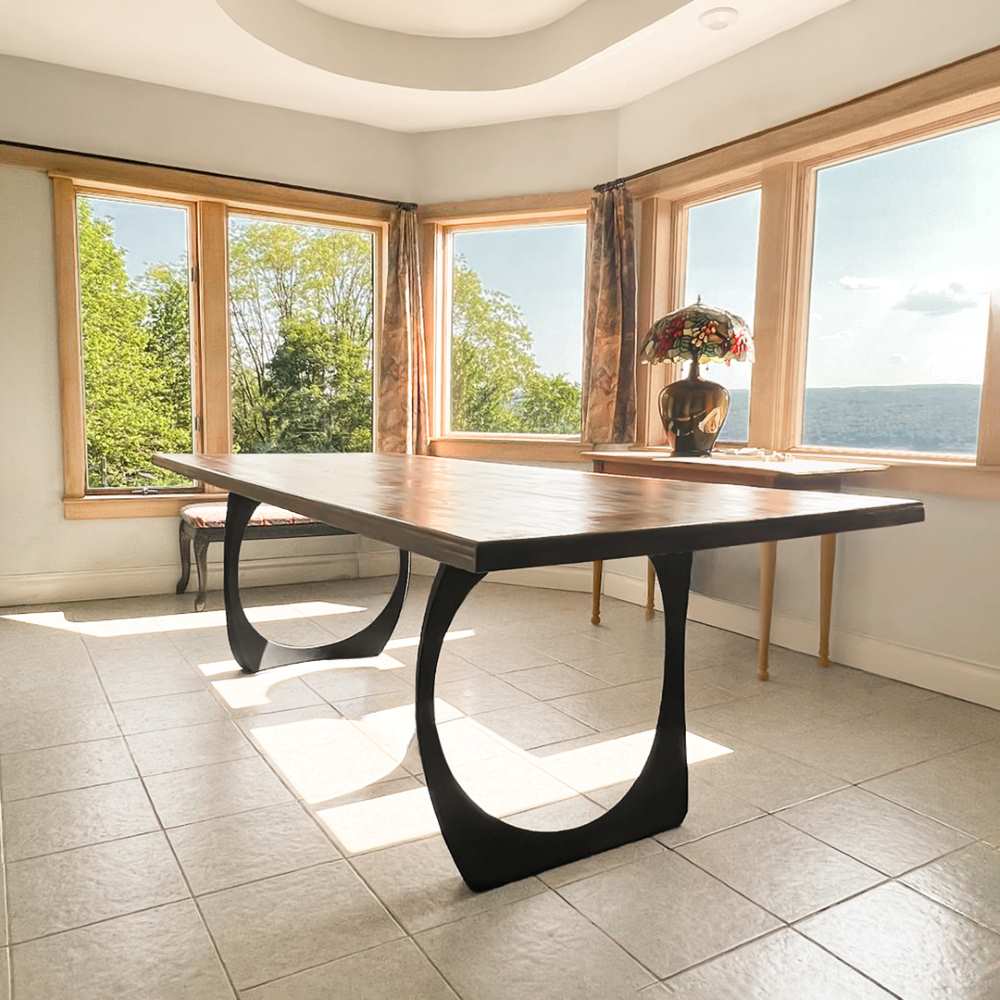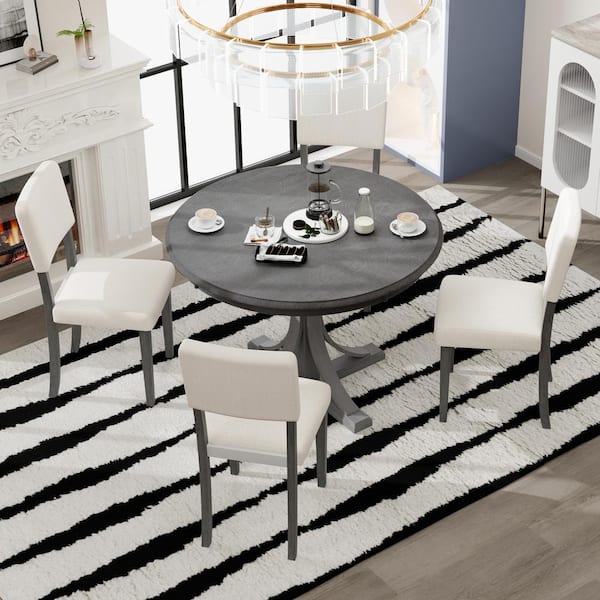Add Charm and Elegance to Your Space with Distinct Dining Room Table Legs
Add Charm and Elegance to Your Space with Distinct Dining Room Table Legs
Blog Article
Just How to Pick the Perfect Dining-room Table Legs for Your Home Design
Selecting the suitable eating room table legs is a nuanced procedure that requires careful consideration of different elements, including your space constraints, aesthetic choices, and useful requirements. The interplay between measurements, materials, and designs can considerably influence the ambiance of your eating location, making it vital to approach this decision systematically.
Assess Your Eating Space
Analyzing your dining room is crucial for selecting the right table legs that complement both appearances and performance. Begin by gauging the dimensions of your eating location, consisting of ceiling elevation, flooring space, and proximity to other furniture. This information will certainly aid identify the appropriate dimension and elevation of your table, which directly affects the option of table legs.
Following, consider the style and design of your eating room. As an example, an open-concept layout might gain from table legs that use visual lightness, such as slim steel or acrylic choices. Alternatively, an extra conventional setup could ask for strong wooden legs that supply a feeling of durability.
Assess the existing color palette and materials in your eating location. Harmonizing the table legs with these aspects produces a cohesive appearance that enhances the overall decor.
Eventually, a comprehensive assessment of your dining space will certainly assist you in making an educated decision, making certain that your table legs not just enhance the aesthetic appeal yet likewise serve functional functions.
Consider Your Design Preferences
When picking dining-room table legs, it is important to assess your personal design preferences, as they significantly influence the overall visual of your dining room. Your selection of table legs can either enhance or contrast with existing decoration, making it important to align them with your favored interior layout style.
If your home leans towards a modern aesthetic, take into consideration sleek steel or minimal wooden legs that provide a tidy, minimalist look. For an extra conventional strategy, ornate wood legs with elaborate carvings can add a touch of style and elegance. Industrial designs take advantage of durable, raw materials such as redeemed timber and metal combinations, showing a sturdy charm.
Additionally, farmhouse and rustic designs typically favor sturdy, chunky legs that evoke a sense of heat and convenience. Conversely, if your decor is diverse, you might choose unusual forms or a mix of materials to develop aesthetic rate of interest.

Evaluate Product Options
The selection of product for eating space table legs plays a pivotal function in both resilience and aesthetic appeal. Typical materials include wood, metal, and composite alternatives, each offering distinctive characteristics that can affect the overall look and durability of your table.
Timber is a timeless selection, known for its heat and convenience. Hardwoods like oak and walnut supply outstanding toughness and can be finished in numerous spots to match any decor. Softwoods like ache are extra susceptible to dents and scrapes, making them much less excellent for high-traffic locations.
Metal legs, commonly crafted from steel or light weight aluminum, exude modernity and commercial appeal. They are extremely durable and resistant to put on, making them suitable for households with kids or frequent events (dining room table legs). In addition, steel can be finished in various colors, boosting the customization opportunities
Composite materials, such as MDF or laminate, deal price and varied designs. While normally less durable than strong timber or steel, they can still supply a stylish appearance and are commonly easy to maintain.
Ultimately, the material you choose should straighten with your way of living, visual choices, and the degree of use your table will experience.
Determine Elevation and Dimension
Choosing the ideal height and size for your dining-room table is necessary for both performance and convenience. The conventional this elevation for dining tables usually varies from 28 to 30 inches, enabling adequate legroom for the majority of individuals when seated. It is important to take into consideration the dimensions of your eating area and the kinds of chairs you intend to utilize.

Additionally, think about the proportions of your eating room. A larger table in a spacious image source location can create a grand ambiance, while a smaller sized table functions well in even more intimate setups. Eventually, the ideal height and size will balance with your general decoration and enhance the eating experience for you and your visitors.
Explore Customization Possibilities

In addition, the layout of the legs can be customized to fit different designs, such as rustic, contemporary, or industrial. For example, conical legs can stimulate a mid-century modern feel, while chunky, block-style legs might reverberate with traditional or farmhouse decor.
Homeowners can additionally discover color finishes, from natural wood stains to repaint, allowing them to match or contrast with the tabletop and surrounding decor.
Furthermore, leg height can be adapted to suit particular seating arrangements or personal preferences, boosting both convenience and performance.
Lastly, one-of-a-kind embellishments, such as makings or attractive brackets, can even more customize the table legs, making the eating experience not simply a statement however a dish piece in the home. By taking into consideration these personalization alternatives, property owners can create an eating room table that really shows their individuality.
Conclusion
Choosing the excellent eating space table legs requires careful factor to consider of numerous factors, go to this website including the dimensions of the eating space, style choices, product durability, and desired elevation. Customization choices better improve the ability to accomplish a cohesive aesthetic that matches the overall design. By systematically assessing these components, property owners can make certain that the chosen table legs not just fulfill practical requirements yet likewise contribute favorably to the eating experience and atmosphere of the home.
Picking the ideal dining area table legs is a nuanced process that needs cautious consideration of various aspects, including your room restraints, visual preferences, and useful demands.Evaluating your eating area is essential for picking the right table legs that enhance both appearances and functionality.When figuring out size, gauge the location where the table will certainly be positioned to guarantee it fits comfortably, allowing for at least 36 inches of clearance around the table for simple movement. A bigger table in a roomy area can develop a grand atmosphere, while a smaller table works well in more intimate settings.Picking the ideal dining area table legs needs careful consideration of different elements, consisting of the measurements of the dining space, design choices, product durability, and preferred elevation.
Report this page